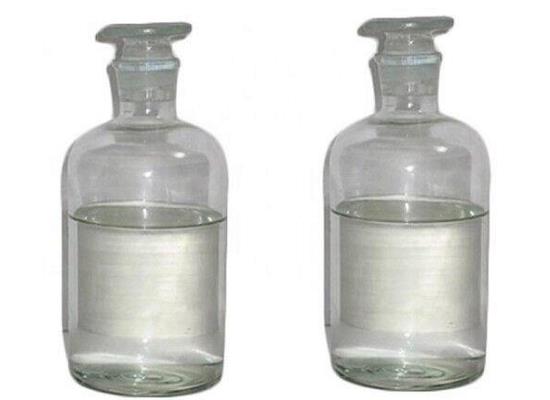Poly(Diallyldimethylammonium Chloride): Versatile Applications and Toxicity
Aug 21,2024
General Description
Poly(diallyldimethylammonium chloride) is utilized in various applications, notably in water treatment, where it acts as a coagulant to remove impurities and pathogens. In the semiconductor industry, Poly(diallyldimethylammonium chloride) enhances chemical mechanical polishing processes for improved device precision. Additionally, Poly(diallyldimethylammonium chloride) plays a role in forward osmosis technologies as a component of hydrogels, enhancing water absorption and reducing energy requirements. However, toxicity studies indicate that high doses can lead to adverse effects, including weight loss and organ damage, with observed NOAELs of 200 mg/kg/day in dogs and 50 mg/kg/day in rats, highlighting the importance of careful handling.

Figure 1. Poly(diallyldimethylammonium chloride)
Versatile Applications
Water Treatment and Purification Applications
Poly(diallyldimethylammonium chloride) serves as a critical agent in the field of water treatment and purification. This polymer is commonly utilized as a coagulant in the treatment of drinking water, as well as in wastewater treatment processes. The efficacy of poly(diallyldimethylammonium chloride) in these applications stems from its ability to neutralize negatively charged particles in water, promoting the aggregation of suspended solids into larger particles that can be easily removed through sedimentation or filtration. Studies have shown that poly(diallyldimethylammonium chloride) is particularly effective in removing organic compounds, heavy metals, and pathogens from water, thereby improving water clarity and safety. The polymer's role is not only pivotal in enhancing the physical appearance of water but also in ensuring its compliance with health and safety standards, making it a valuable component in the treatment infrastructure. 1
Enhancement of Chemical Mechanical Polishing Processes
In the semiconductor industry, poly(diallyldimethylammonium chloride) is employed to optimize the chemical mechanical polishing (CMP) process, which is essential for the production of electronic devices. The polymer aids in selectively polishing polysilicon over silicon dioxide and silicon nitride films, which is a critical step in the manufacturing of semiconductors. Poly(diallyldimethylammonium chloride) achieves this by adjusting the removal rates of different materials, thereby enhancing the efficiency and precision of the CMP process. This selective polishing capability is crucial for the development of devices with finely tuned electronic properties and contributes to the advancement of microelectronic technology. The implementation of poly(diallyldimethylammonium chloride) in CMP processes underscores its significance in the production of high-performance semiconductor devices. 2
Innovations in Forward Osmosis Applications
Poly(diallyldimethylammonium chloride) has also been integrated into forward osmosis technologies as part of novel draw solutions in the form of hydrogels. These polymeric network hydrogels, which incorporate poly(diallyldimethylammonium chloride), exhibit enhanced water absorption capabilities and increased osmotic pressure, facilitating more efficient water transport through osmotic processes. The application of these hydrogels in forward osmosis systems is particularly beneficial for low-energy water concentration and crystallization of aqueous solutions, which are vital in environmental and food processing applications. The inclusion of poly(diallyldimethylammonium chloride) in these hydrogels significantly improves their performance by boosting their swelling capacity and osmotic efficiency. This advancement not only supports sustainable water treatment technologies but also contributes to the reduction of energy requirements in water processing applications, promoting environmental sustainability and resource conservation. 1
Toxicity
Overview of Toxicity
Poly(diallyldimethylammonium chloride) exhibits various toxicological effects, particularly upon high doses. In laboratory studies, intermittent oral doses exceeding 42 grams per kilogram have resulted in significant adverse effects, including weight loss and damage to liver and renal tissues. These findings highlight the potential systemic toxicity of Poly(diallyldimethylammonium chloride) during prolonged exposure. Additionally, irritation profiles observed in animal studies indicate that Poly(diallyldimethylammonium chloride) can cause slight skin irritation, as evidenced by very minimal erythema in rabbits after dermal application. The overall irritation index suggests that while Poly(diallyldimethylammonium chloride) can elicit some skin reactions, these effects are generally low. 3
Effects on Laboratory Animals
The toxicity of Poly(diallyldimethylammonium chloride) in laboratory settings has been determined through various studies involving different animal species. In beagle dogs, feeding trials with doses up to 800 mg per kilogram per day showed a decrease in body weight but no significant treatment-related effects otherwise. The no-observed-adverse-effect level (NOAEL) was established at 200 mg/kg/day. Moreover, studies on rats demonstrated that high doses of Poly(diallyldimethylammonium chloride) also lead to reduced weight gain, with a NOAEL of 50 mg/kg/day. Furthermore, eye irritation studies indicated that while there was mild conjunctival redness observed, Poly(diallyldimethylammonium chloride) was not found to be severely irritating to eyes overall. These controlled studies underscore the need for careful handling and consideration of exposure levels to mitigate the potential health risks associated with Poly(diallyldimethylammonium chloride). 3
References:
[1] ANANYA BARDHAN. Feasibility of Poly (Vinyl Alcohol)/Poly (Diallyldimethylammonium Chloride) Polymeric Network Hydrogel as Draw Solute for Forward Osmosis Process.[J]. Membranes, 2022, 12 11. DOI:10.3390/membranes12111097.
[2] NARESH K. PENTA S V B P R Dandu Veera. Role of Poly(diallyldimethylammonium chloride) in Selective Polishing of Polysilicon over Silicon Dioxide and Silicon Nitride Films[J]. Langmuir, 2011, 27 7: 3213-4278. DOI:10.1021/la104257k.
- Related articles
- Related Qustion
Supplementation with pyridoxal 5'-phosphate monohydrate can synthesize neurotransmitters such as dopamine and serotonin, maintaining a healthy nervous system.....
Nov 4,2025Biochemical EngineeringSulfolane excels in gas chromatography equipped with flame ionization detection for volatile compounds but challenges groundwater remediation due to high mobility.....
Aug 21,2024APIPoly(diallyldimethylammonium chloride)
26062-79-3You may like
Poly(diallyldimethylammonium chloride) manufacturers
- Poly(diallyldimethylammonium chloride)
-

- 2025-11-08
- CAS:26062-79-3
- Min. Order:
- Purity: 0.99
- Supply Ability:
- Poly(diallyldimethylammonium chloride)
-

- $0.00 / 1kg
- 2025-11-07
- CAS:26062-79-3
- Min. Order: 1kg
- Purity: 99%min
- Supply Ability: 20tons
- Poly(diallyldimethylammonium chloride)
-

- $9.90 / 1KG
- 2025-11-06
- CAS:26062-79-3
- Min. Order: 1KG
- Purity: 99%
- Supply Ability: 5tons






